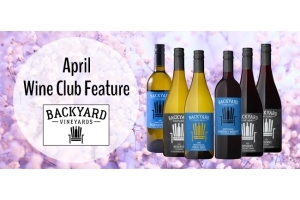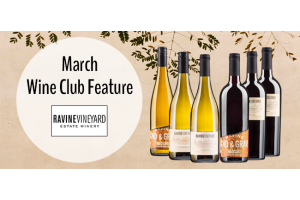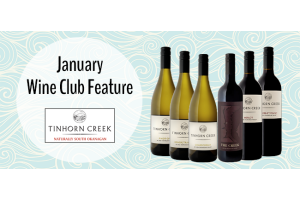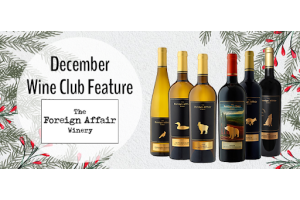Ageing Nova Scotia Wine

There is a perception in most of the Canadian wine community that Atlantic wine is a new thing - the industry actually started in the late 70’s - and there is not much knowledge outside the region about the ageworthiness of the wines. Few restaurant cellars in Toronto, Montreal, Calgary and Vancouver have any Atlantic wine at all, let alone anything over 3 years old, or 33… That said, the cool climate down east produces high acidity in wines which can lead to longevity.
Some have caught on to Nova Scotia’s floral, fruity Tidal Bay appellation wines, and our Asti-like, low alcohol sparkling wines, most notably Nova 7. The savviest restaurants may have a few of our premium dry bubblies, from L’Acadie Vineyards, Benjamin Bridge, and others. It is highly unlikely, though, that any of our red wines are well known to sommeliers west of New Brunswick.
I recently had the opportunity to taste three very interesting verticals of wines from Nova Scotia’s L’Acadie Vineyards, from the Gaspereau Valley. L’Acadie is a small, family owned winery near Wolfville that specializes in traditional method sparkling wines. Winemaker Bruce Ewert had a lot of success in other parts of Canada - especially in B.C. where he won several prestigious medals - before opening his own winery with wife Pauline in Nova Scotia, and he has continued his success here.
I compared, blind, three vintages (2007 through 2009) of their top Traditional Method bubbly, Prestige Brut, four vintages (2007 and 2010 through 2012) of their Passito red (made like an Italian ripassso wine), formerly called Eclipse, and five vintages (2006 through 2010) of their top red, Alchemy, made from 100% dried grapes in the Amarone style.
Opportunities like this are why I’m in this business.
I’ll give my impressions on the wines, but first I want to talk about another Nova Scotia red wine. I was very recently at a tasting of fine 1985 Bordeaux and California red wines arranged by my Sommelier instructor Adam Dial, son of Roger Dial, the father of Nova Scotia wine. Dial was founder of the first modern Atlantic winery, Grand Pré, not to be confused with Domaine de Grand Pré, a fine winery in its own right which opened at the same location two decades later.
Unbeknownst to us, including Roger, who was at the tasting, someone had slipped in a blind bottle of his 1982 Cuvée D’Amur, his red wine made from Nova Scotia grown Michurinetz grapes, a rather obscure Russian variety. Amongst other medals, the 1983 vintage was named the best red wine in Canada in a blind competition to supply the Canadian Embassies around the world, back in the day.
So, how did a 33 year old Nova Scotia red wine taste? Well, it was in very good shape, holding its own with some super premium world beaters, and coming across as very Bordeaux-like (that’s what I thought it was). So, yes, Maritime terroir can produce age-worthy red wine.
Now, back to L’Acadie Vineyards. Here are my notes, starting with the bubbly, that prove how well good Nova Scotia wine - dry sparkling and red - can age, at least in the 10 year range:
L’Acadie Vineyards Prestige Brut
2007: Lots of autolytic yeast character on the nose, with hints of Parmesan cheese. The acid is high, reflecting the higher acid. Leaner style bubbly, austere, that will likely age well.
2008: Very active fizz, with a pleasantly bready, toasty nose, plus some attractive spicy pear. Dry, medium bodied, with a clean fresh finish.
2009: Rich, creamy style, with a somewhat developed apple nose, similar to spiced apple pie, or iced cider. Full texture, with a long, rich apple finish, like an apple turnover!
L’Acadie Vineyards Passito (formerly Eclipse)
2007: Forward nose of toasted, spicy oak, alongside ripe dark fruit. Soft, easy in the mouth, but with a nice hit of acid that balances out the finish, wow, this seems young!
2010: Fine, savoury nose, with tasty red cherry fruit, backed with some oak. Soft, smooth palate, with some old world style dried cherry - very Italian. Tasting excellent now.
2011: Has a more developed nose, with lots of dried fruit. Big, full textured, with notable alcohol. Very ripe fruit, with a soft, smooth finish.
2012: Dried red fruit, cherry nibs on the nose, which reminds of Valpolicella. Palate is quite dusty and dry on the finish, though. Grippy tannins should age well.
L'Acadie Vineyards Alchemy (Appasimento method)
2006: Red fruit on the nose would suggest a much younger wine. Very clean, modern tasting with a somewhat sweet ripe fruit finish.
2007: Somewhat similar to old Rioja on the nose, with coconutty oak and dark fruit. Quite sweet dark red fruit in the mouth, with a soft and smooth finish.
2008: Nose shows oak, nut and dried berries, and is quite warm with alcohol, making this reminiscent of Amarone or even Port.
2009: Very perfumed, volatile, which is very common in Amarone, too, and attractive to many. Soft and smooth palate, with raisiny red fruit on the finish, and warmth.
2010: Dried fruit dominates the nose as well as a distinct earthiness that reminds of cooked beets. Slightly volatile, and drier on the palate than the other vintages.
This was a wonderful opportunity to taste a bit of recent wine history, and I thank L’Acadie Vineyards for that. Smart wine buyers will hide a bit away for the future. Like Cuvée D’Amur, it would be very interesting to taste some of these after three decades.
L’Acadie’s wines are available from coast-to-coast, right here on My Wine Canada.
Craig Pinhey is a wine writer, judge and consultant. Feel free to visit him on Facebook.





